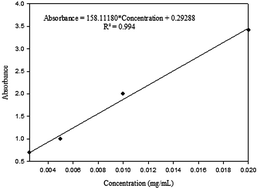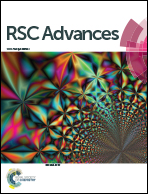Application of ANFIS model to optimise the photocatalytic degradation of chlorhexidine digluconate
Abstract
The degradation of chlorhexidine digluconate (CHD) has been investigated using TiO2 suspension under UV irradiation with variation of pH, catalyst loading and substrate concentration within the range of 4.0–10.5, 0.1–0.4 g L−1 and 0.5–1.5 g L−1, respectively. The molecules of CHD have been adsorbed on TiO2 nano particles and degraded under UV irradiation. The influence of reaction parameters has been studied and reasons behind those have been correspondingly established. The molecular weights of by-products have been identified after photocatalytic degradation using mass spectroscopy. During the optimization of the process parameters, subtractive clustering fuzzy inference system has been employed to generate the optimum fuzzy rule base sets. A stable estimation technique has been attained by applying hybrid learning algorithm. Moreover, the performance and accuracy of the developed model has been tested using distinct test data set randomly selected from the experimental domain. The effects of different inherent parameters of subtractive clustering have also been studied and among them only squash factor is found to be the most important one for the present study. ANFIS has thus proved to be a congenial tool for the optimization of process parameters of the photocatalytic reaction discussed here.


 Please wait while we load your content...
Please wait while we load your content...